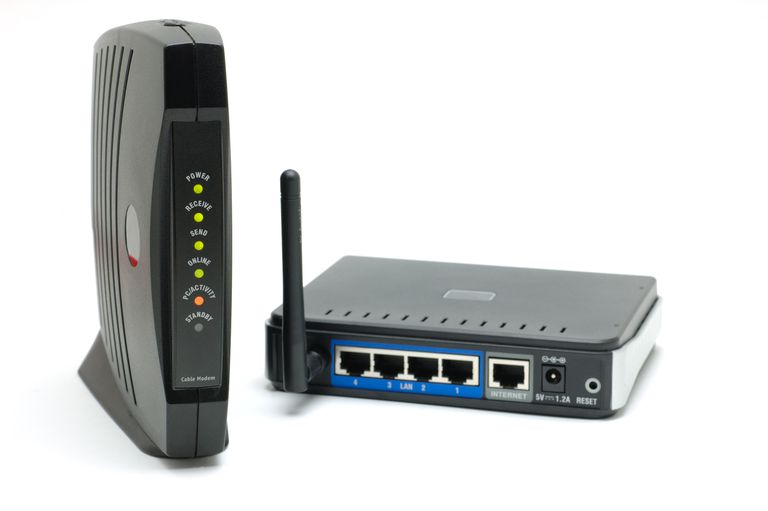
Routers and Modems look like two small plastic boxes sitting on the desks of almost every other home in the US. It is hard to distinguish between them in the first glance since:
- Both of them have USB and other jacks and look almost the same.
- Both of them have almost similar size and shape.
- Both of them have flashing red, green and orange lights indicating that they are doing their job or not.
- Both of them connect to a computer.
- Both of them have a crucial role in connecting a household to the internet.
The major differentiator between a router and a modem is that the modem paves access to the internet whereas a router connects the devices to Wi-Fi locally.
The two devices work conjointly in order to get you connected to the internet seamlessly. However, they are doing totally different jobs altogether. Let’s see what exactly they do:
[Note: This article assumes that the reader has an active high-speed internet connection at home from a cable company or Internet Service Providers like Spectrum and Cox internet, etc. accessible from Local Cable Deals]
What Modems do?
A modem is a short form of Modulator-Demodulator. It is basically your home’s gateway to the world of internet connectivity. It usually is a skinny plastic box with 5-6 blingy LED lights. The LED lights tell if the device is on or not, and if it’s on, the lights depict whether it has full or limited internet connectivity. If your internet service provider provides cox internet connection which offers cable or fiber internet, you usually plug a LAN wire into the modem device, however, if you have subscribed to DSL service, then you’ll have to plug that into your phone line.
A modem’s job is to take signals from your Internet Service Provider and translate them into the signals your devices can use and mutatis mutandis. The connection between the internet and your house, as established by a modem, is known as a Wide Area Network (WAN). Every single modem has its respective IP address to identify it online. In addition to it, modems have no role in providing an extra layer of security to your internet connection, it just brings the internet to your home.
Modems typically have LEDs on their faces, so that you need a glance to see what’s happening. One light shows that the device is switched on and is receiving power, one implies that the modem is receiving data from your ISP, and one shows that the modem is sending out data smoothly. That’s where you begin in a troubleshooting circumstance: if the sending and/or receiving lights are flashing or changing colors, this means that the ISP is having problems with transmitting signals and the issue is with the connection outside. Another light depicts whether the devices are accessing the internet or not.
Routers Bring Internet to your Devices
A router connects to the modem and in turn creates a local internet cloud for the devices in your use like mobile, laptops printers and smart TVs, etc. Early routers only had Ethernet ports to provide wired connectivity whereas now most modern routers provide both wired as well as wireless connectivity.
The router transmits network traffic from a single modem link and sends all that information via its Ethernet ports and through the 2.4GHz and 5GHz bands via air. Amid advertised figures, wired is smoother than wireless internet and if you want every single ounce of connectivity from your subscription we recommend using Ethernet for speed demanding tasks.
Depending on the model, the routers may come with two or in some cases more antennas. The more the number of antennas protruding out of the router the greater the prices will be. These antennas like a dead spider’s legs are advertised to enhance the range of Wi-Fi signals. These added antennas would, in essence, mean increased range, but your internet speed will still depend on your distance from the router and the technology supporting that connection.
Final Word…
In order to set up an active home connection, you will always need both a modem and a router or a device offering the combination of both. When you only want to connect a single device (a computer for instance) with a wire to access the internet, just a modem will suffice. On the contrary, a router cannot be used as a standalone device, in any case. In order to decode a signal from your Provider, you are always going to need a modem.
Generally, the router is something you want to concentrate on when you’re trying to expedite your internet connection. However, it has limits of his own, on bandwidth, but it disperses the signals to all your mobile devices like laptops, smartphones, etc. In short, your router manages your Wi-Fi signals locally.
